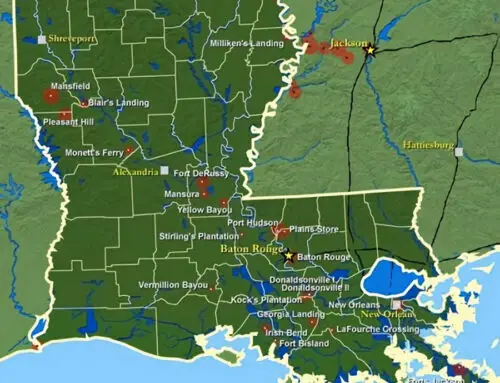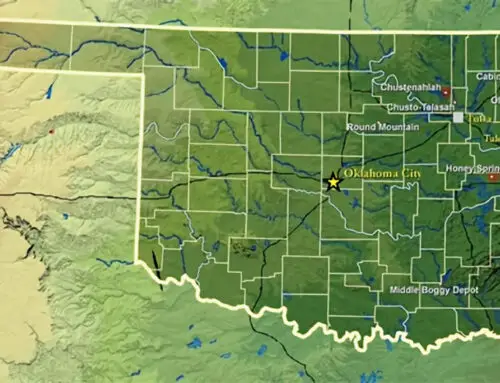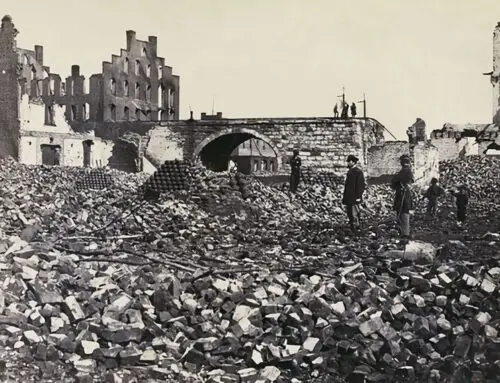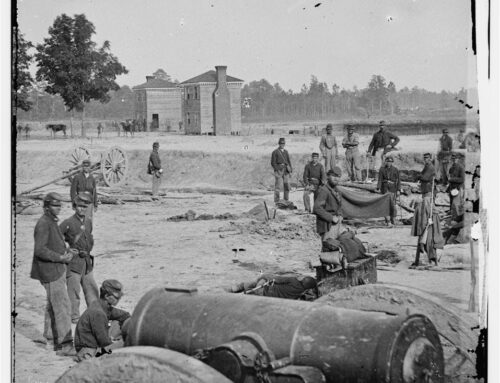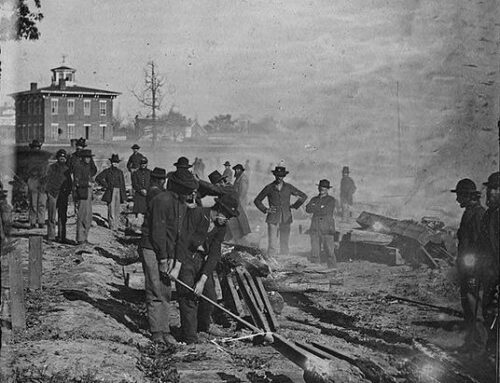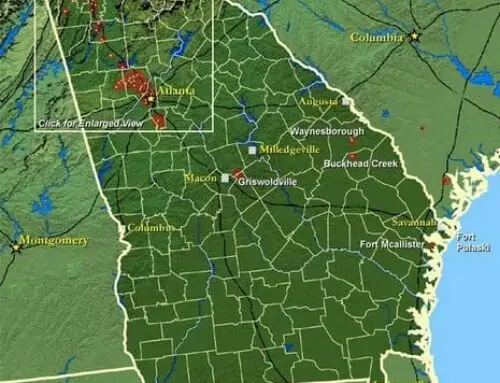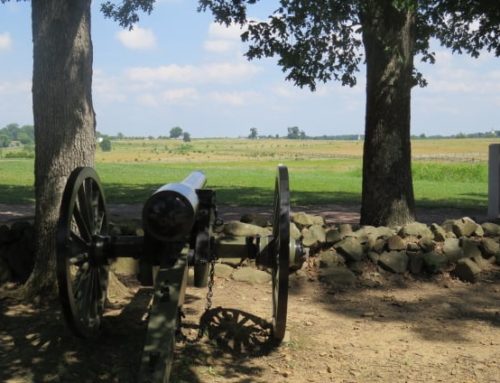All Civil War battles in West Virginia. They are in the order that they took place during the course of the Civil War.
Philippi
Civil War battles in West Virginia
Other Names: Philippi Races
Location: Barbour County
Campaign: Operations in Western Virginia (June-December 1861)
Date(s):June 3, 1861
Principal Commanders: Col. Thomas A. Morris [US]; Col. George A. Porterfield [CS]
Forces Engaged: Brigades
Estimated Casualties: 30 total (US 4; CS 26)
Description: Col. Thomas A. Morris, temporarily in command of Union forces in western Virginia, mounted a two-prong advance under E. Dumont and B.F. Kelley against a small Confederate occupation force at Philippi under Porterfield. Kelley marched on back roads from near Grafton on June 2 to reach the rear of the town, while Dumont moved south from Webster. Both columns arrived at Philippi before dawn on the 3rd. The resulting surprise attack routed the Confederate troops, forcing them to retreat to Huttonsville. Although a small affair, this was considered the first major land action in the Eastern Theater.
Result(s): Union victory
Hoke’s Run
Civil War battles in West Virginia
Other Names: Falling Waters, Hainesville
Location: Berkeley County
Campaign: Manassas Campaign (July 1861)
Date(s): July 2, 1861
Principal Commanders:Maj. Gen. Robert Patterson [US]; Brig. Gen. Thomas J. Jackson [CS]
Forces Engaged: Brigades
Estimated Casualties:114 total (US 23; CS 91)
Description: On July 2, Maj. Gen. Robert Patterson’s division crossed the Potomac River near Williamsport and marched on the main road to Martinsburg. Near Hoke’s Run, Abercrombie’s and Thomas’s brigades encountered regiments of T.J. Jackson’s brigade, driving them back slowly. Jackson’s orders were to delay the Federal advance only, which he did, withdrawing before Patterson’s larger force. On July 3, Patterson occupied Martinsburg but made no further aggressive moves until July 15, when he marched to Bunker Hill.
Instead of moving on Winchester, however, Patterson turned east to Charles Town and then withdrew to Harpers Ferry. This retrograde movement took pressure off Confederate forces in the Shenandoah Valley and allowed Johnston’s army to march to support Brig. Gen. P.G.T. Beauregard at Manassas. Patterson’s inactivity contributed to the Union defeat at First Manassas.
Result(s): Union victory
Rich Mountain
Civil War battles in West Virginia
Other Names: None
Location: Randolph County
Campaign: Operations in Western Virginia (June-December 1861)
Date(s): July 11, 1861
Principal Commanders: Maj. Gen. George B. McClellan and Brig. Gen. William S. Rosecrans [US]; Lt. Col. John Pegram andBrig. Gen. Robert S. Garnett [CS]
Forces Engaged: Brigades
Estimated Casualties: 346 total (US 46; CS 300)
Description:Maj. Gen. George B. McClellan assumed command of Union forces in western Virginia in June 1861. On June 27, he moved his divisions from Clarksburg south against Lt. Col. John Pegram’s Confederates, reaching the vicinity of Rich Mountain on July 9. Meanwhile, Brig. Gen. T.A. Morris’s Union brigade marched from Philippi to confront Brig. Gen. R.S. Garnett’s command at Laurel Hill. On July 11, Brig. Gen. William S. Rosecrans led a reinforced brigade by a mountain path to seize the Staunton-Parkersburg Turnpike in Pegram’s rear.
A sharp two-hour fight ensued in which the Confederates were split in two. Half escaped to Beverly, but Pegram and the others surrendered on July 13. Hearing of Pegram’s defeat, Garnett abandoned Laurel Hill. The Federals pursued, and, during fighting at Corrick’s Ford on July 13, Garnett was killed. On July 22, McClellan was ordered to Washington, and Rosecrans assumed command of Union forces in western Virginia. Union victory at Rich Mountain was instrumental in propelling McClellan to command of the Army of the Potomac.
Result(s): Union victory
Kessler’s Cross Lanes
Civil War battles in West Virginia
Other Names: Cross Lanes
Location: Nicholas County
Campaign: Operations in Western Virginia (June-December 1861)
Date(s): August 26, 1861
Principal Commanders:Col. Erastus Tyler [US]; Brig. Gen. John Floyd [CS]
Forces Engaged: Brigades
Estimated Casualties: 285 total (US 245; CS 40)
Description: On August 26, Brig. Gen. John Floyd, commanding Confederate forces in the Kanawha Valley, crossed the Gauley River to attack Col. Erastus Tyler’s 7th Ohio Regiment encamped at Kessler’s Cross Lanes. The Union forces were surprised and routed. Floyd then withdrew to the river and took up a defensive position at Carnifex Ferry. During the month, Gen. Robert E. Lee arrived in western Virginia and attempted to coordinate the forces of Brig. Gens. Floyd, Henry Wise, and William W. Loring.
Result(s): Confederate victory
Cheat Mountain
Civil War battles in West Virginia
Other Names: Cheat Mountain Summit
Location: Pocahontas County
Campaign: Operations in Western Virginia (June-December 1861)
Date(s): September 12-15 1861
Principal Commanders: Brig. Gen. Joseph Reynolds [US]; Gen. Robert E. Lee and Col. Albert Rust [CS]
Forces Engaged: Brigades
Estimated Casualties: 170 total (US 80; CS 90)
Description:Gen. Robert E. Lee directed his first offensive of the war against Brig. Gen. Joseph Reynolds’s entrenchments on the summit of Cheat Mountain and in the Tygart Valley. The Confederate attacks were uncoordinated, however, and the Federal defense was so stubborn that Col. Albert Rust (leading the attacks) was convinced that he confronted an overwhelming force.
He actually faced only about 300 determined Federals. Lee called off the attack and, after maneuvering in the vicinity, withdrew to Valley Head on September 17. In October, Lee renewed operations against Laurel Mountain with the troops of Floyd and Loring, but the operation was called off because of poor communication and lack of supplies. Lee was recalled to Richmond on October 30 after achieving little in western Virginia.
Result(s): Union victory
Carnifex Ferry
Civil War battles in West Virginia
Other Names: None
Location: Nicholas County
Campaign: Operations in Western Virginia (June-December 1861)
Date(s): September 10, 1861
Principal Commanders: Brig. Gen. William S. Rosecrans [US]; Brig. Gen. John Floyd [CS]
Forces Engaged: Brigades
Estimated Casualties: 250 total
Description: Learning of Col. Erastus Tyler’s rout at Kessler’s Cross Lanes, Brig. Gen. William S. Rosecrans moved three brigades south from Clarksburg to support him. On the afternoon of September 10, he advanced against Brig. Gen. John Floyd’s camps at Carnifex Ferry. Darkness halted several hours fighting. The strength of the Union artillery convinced Floyd to retreat during the night. Floyd blamed his defeat on his co-commander Brig. Gen. Henry Wise, contributing to further dissension in the Confederate ranks.
Result(s): Union victory
Greenbrier River
Civil War battles in West Virginia
Other Names: Camp Bartow
Location: Pocahontas County
Campaign: Operations in Western Virginia (June-December 1861)
Date(s): October 3, 1861
Principal Commanders: Brig. Gen. Joseph Reynolds [US]; Brig. Gen. Henry R. Jackson [CS]
Forces Engaged: Brigades
Estimated Casualties: 80 total (US 40; CS 40)
Description: During the night of October 2-3, Brig. Gen. Joseph Reynolds with two brigades advanced from Cheat Mountain to reconnoiter the Confederate position at Camp Bartow on the Greenbrier River. Reynolds drove in the Confederate pickets and opened fire with his artillery. After sporadic fighting and an abortive attempt to turn his enemy’s right flank, Reynolds withdrew to Cheat Mountain.
Result(s): Inconclusive
Camp Alleghany
Civil War battles in West Virginia
Other Names: Allegheny Mountain
Location: Pocahontas County
Campaign: Operations in Western Virginia (June-December 1861)
Date(s): December 13, 1861
Principal Commanders: Brig. Gen. Robert Milroy [US]; Col. Edward Allegheny Johnson [CS]
Forces Engaged: Brigades
Estimated Casualties: 283 total (US 137; CS 146)
Description: In December, Confederate forces under Col. Edward Johnson occupied the summit of Allegheny Mountain to defend the Staunton-Parkersburg Pike. A Union force under Brig. Gen. Robert Milroy attacked Johnson on December 13. Fighting continued for much of the morning as each side maneuvered to gain the advantage. Finally, Milroy’s troops were repulsed, and he retreated to his camps near Cheat Mountain. At year’s end, Edward Johnson remained at Camp Allegheny with five regiments, and Henry Heth was at Lewisburg with two regiments.
Result(s): Inconclusive
Princeton Court House
Civil War battles in West Virginia
Other Names: Princton Court House, WV
Location: Mercer County
Campaign: Jackson’s Shenandoah Valley Campaign (1862)
Date(s): May 15-17, 1862
Principal Commanders: Brig. Gen. Jacob D. Cox [US];Brig. Gen. Humphery Marshall [CS]
Forces Engaged: District of the Kanawha [US]; Army of East Kentucky and Col. Gabriel C. Wharton’s Brigade, Department of Southwest Virginia [CS}
Estimated Casualties:129 total (US 23k/69w/21m; CS incomplete, Marshall 4k/12w, Wharton no report)
Description: By early May 1862 Union forces in today’s West Virginia were positioned to breach the Alleghenies and debouch into Virginia’s Great Valley at two points more than 100 miles apart. Brig. Gen. Robert H. Milroy’s column, its axis of march the Staunton-Parkersburg Turnpike, advanced from Cheat Mountain and occupied in succession Camp Allegheny, Monteray, McDowell, and Shenandoah Mountain. Retreating before the oncoming Federals, Confederate Brig. Gen. Edward Johnson pulled back to Westview, six miles west of Staunton. Union soldiers of Brig. Gen. Jacob D. Cox’s District of Kanawha threatened the East Tennessee & Virginia Railroad.
The Federals by mid-May, although ousted from Pearisburg, held Mercer County and braced for a lunge at the railroad. Confederate Brig. Gen. Humphery Marshall arrived from Abingdon, Virginia, with the Army of East Kentucky. Boldly seizing the initiative, Marshall bested Cox’s two brigades during three days of fighting, May 15-17, in Mercer County centering on Princeton Courthouse. Breaking contact with the Confederates on the night of the 17-18, Cox withdrew 20 miles to Camp Flat Top. Col. George Crook, commanding Cox’s 3rd brigade, marched via the James and Kanawha Turnpike and occupied Lewisburg, where on May 23 he defeated Brig. Gen. Henry Heth’s brigade. Upon learning that Maj. Gen. Thomas J. Stonewall Jackson’s army had routed Maj. Gen. N.P. Banks division at Winchester (March 25) and driven it across the Potomac, Crook evacuated Lewisburg and pulled back to Meadow Bluff.
Result(s): Confederate victory
Harpers Ferry
Civil War battles in West Virginia
Other Names: None
Location: Jefferson County
Campaign: Maryland Campaign (September 1862)
Date(s):September 12-15, 1862
Principal Commanders:Col. Dixon S. Miles [US]; Maj. Gen. Thomas J. Jackson [CS]
Forces Engaged: Corps
Estimated Casualties: 12,922 total (US 44k/173w/12,419 captured; CS 39k/247w)
Description: Learning that the garrison at Harpers Ferry had not retreated after his incursion into Maryland, Lee decided to surround the force and capture it. He divided his army into four columns, three of which converged upon and invested Harpers Ferry. On September 15, after Confederate artillery was placed on the heights overlooking the town, Union commander Col. Miles surrendered the garrison of more than 12,000.
Miles was mortally wounded by a last salvo fired from a battery on Loudoun Heights. Jackson took possession of Harpers Ferry, then led most of his soldiers to join with Lee at Sharpsburg. After paroling the prisoners at Harpers Ferry, A.P. Hill’s division arrived in time to save Lee’s army from near-defeat at Sharpsburg.
Result(s): Confederate victory
Droop Mountain
Civil War battles in West Virginia
Other Names: None
Location: Pocahontas County
Campaign: Averell’s Raid on the Virginia & Tennessee Railroad (November 1863)
Date(s): November 6, 1863
Principal Commanders: Brig. Gen. William W. Averell [US]; Brig. Gen. John Echols [CS]
Forces Engaged: Brigades
Estimated Casualties: 526 total
Description:In early November, Brig. Gens. W.W. Averell and Alfred Napoleon Alexander Duffié embarked on a raid into southwestern Virginia to disrupt the Virginia & Tennessee Railroad. While Duffié’s column destroyed military property en route, Averell encountered and defeated a Confederate brigade under Brig. Gen. John Echols at Droop Mountain. The Union columns reunited at Lewisburg the next day but were in no condition to continue their raid. After this battle, Confederate resistance in West Virginia collapsed.
Result(s): Union victory
Moorefield
Civil War battles in West Virginia
Other Names: Oldfields
Location: Hardy County
Campaign: Early’s Raid and Operations against the B&O Railroad (June-August)
Date(s): August 7, 1864
Principal Commanders: Brig. Gen. William W. Averell [US]; Brig. Gen. John McCausland [CS]
Forces Engaged: Divisions
Estimated Casualties:531 total
Description: While returning to the Shenandoah Valley after burning Chambersburg, McCausland’s and Johnson’s cavalry were surprised at Moorefield on August 7 and routed by pursuing Union cavalry. This defeat impeded the morale and effectiveness of the Confederate cavalry for the remainder of the 1864 Valley Campaign.
Result(s): Union victory
Summit Point
Civil War battles in West Virginia
Other Names: Flowing Springs, Cameron’s Depot
Location: Jefferson County
Campaign: Sheridan’s Shenandoah Valley Campaign (August-December 1864)
Date(s): August 21, 1864
Principal Commanders: Maj. Gen. Philip Sheridan [US]; Lt. Gen. Jubal Early [CS]
Forces Engaged: Divisions
Estimated Casualties: 1,000 total
Description:As Maj. Gen. Philip Sheridan concentrated his army near Charles Town, Lt. Gen. Jubal Early and Maj. Gen. Richard Anderson attacked the Federals with converging columns on August 21. Early moved east via Smithfield against the Union VI Corps. Anderson struck north against Wilson’s Union cavalry at Summit Point. There was cavalry fighting near Berryville. The Federals fought effective delaying actions, withdrawing to near Halltown on the following day.
Result(s): Inconclusive
Smithfield Crossing
Civil War battles in West Virginia
Other Names: None
Location: Jefferson County and Berkeley County
Campaign: Sheridan’s Shenandoah Valley Campaign (August-December 1864)
Date(s): August 25-29, 1864
Principal Commanders: Brig. Gen. Wesley Merritt [US]; Lt. Gen. Jubal Early [CS]
Forces Engaged: Divisions
Estimated Casualties: 300 total
Description: On August 29, two Confederate infantry divisions crossed Opequon Creek at Smithfield and forced back Merritt’s Union cavalry division back along the road to Charles Town. Ricketts’s infantry division was brought up to stop the Confederate advance.
Result(s): Inconclusive
Shepherdstown
Civil War battles in West Virginia
Other Names: Boteler’s Ford
Location: Jefferson County
Campaign: Maryland Campaign (September 1862)
Date(s): September 19-20, 1862
Principal Commanders: Maj. Gen. Fitz John Porter [US]; Brig. Gen. William Pendleton and Maj. Gen. A.P. Hill [CS]
Forces Engaged: Brigades
Estimated Casualties: 625 total
Description: On September 19, a detachment of Porter’s V Corps pushed across the river at Boteler’s Ford, attacked the Confederate rearguard commanded by Brig. Gen. William Pendleton, and captured four guns. Early on the 20th, Porter pushed elements of two divisions across the Potomac to establish a bridgehead. Hill’s division counterattacked while many of the Federals were crossing and nearly annihilated the 118th Pennsylvania (the Corn Exchange Regiment), inflicting 269 casualties. This rearguard action discouraged Federal pursuit. On November 7, President Lincoln relieved McClellan of command because of his failure to follow up Lee’s retreating army. Maj. Gen. Ambrose E. Burnside rose to command the Union army.
Result(s): Confederate victory
Source: https://www.nps.gov/civilwar/search-battles.htm# No protection is claimed in original U.S. Government works


